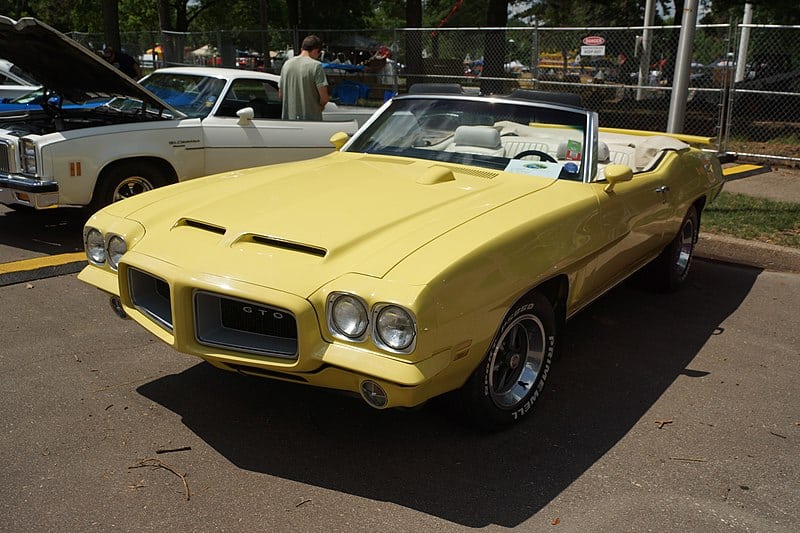Africa is home to a remarkable diversity of herbivorous mammals, each uniquely adapted to their environment. From the towering giraffes that grace the savannas to the elusive okapis hidden in dense forests, these creatures play vital roles in their ecosystems. Their varied diets, habitats, and behaviors offer a fascinating glimpse into the continent’s rich biodiversity. In this article, we explore some of the most unique herbivorous mammals found in Africa, highlighting their distinctive features and contributions to their habitats.
African Elephant (Loxodonta africana)
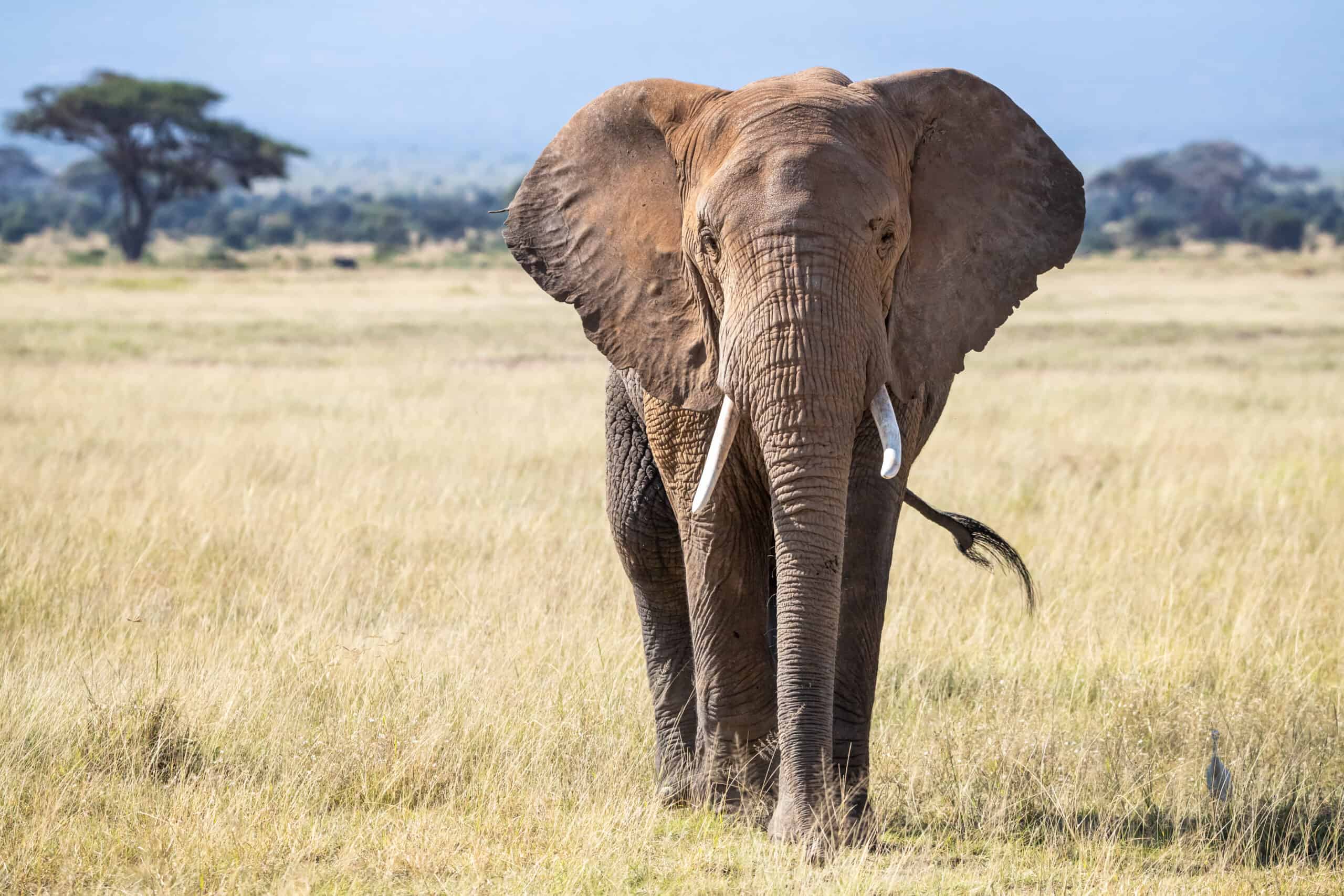
The African Elephant, the largest land mammal on Earth, is a fascinating creature that roams the vast savannas and forests of Africa. Known for their impressive size, these gentle giants possess large ears that help regulate their body temperature. They primarily feed on a diet of grasses, leaves, and bark, consuming up to 300 pounds of vegetation daily. African Elephants are also known for their complex social structures, with tight-knit family groups led by a matriarch.
Giraffe (Giraffa camelopardalis)
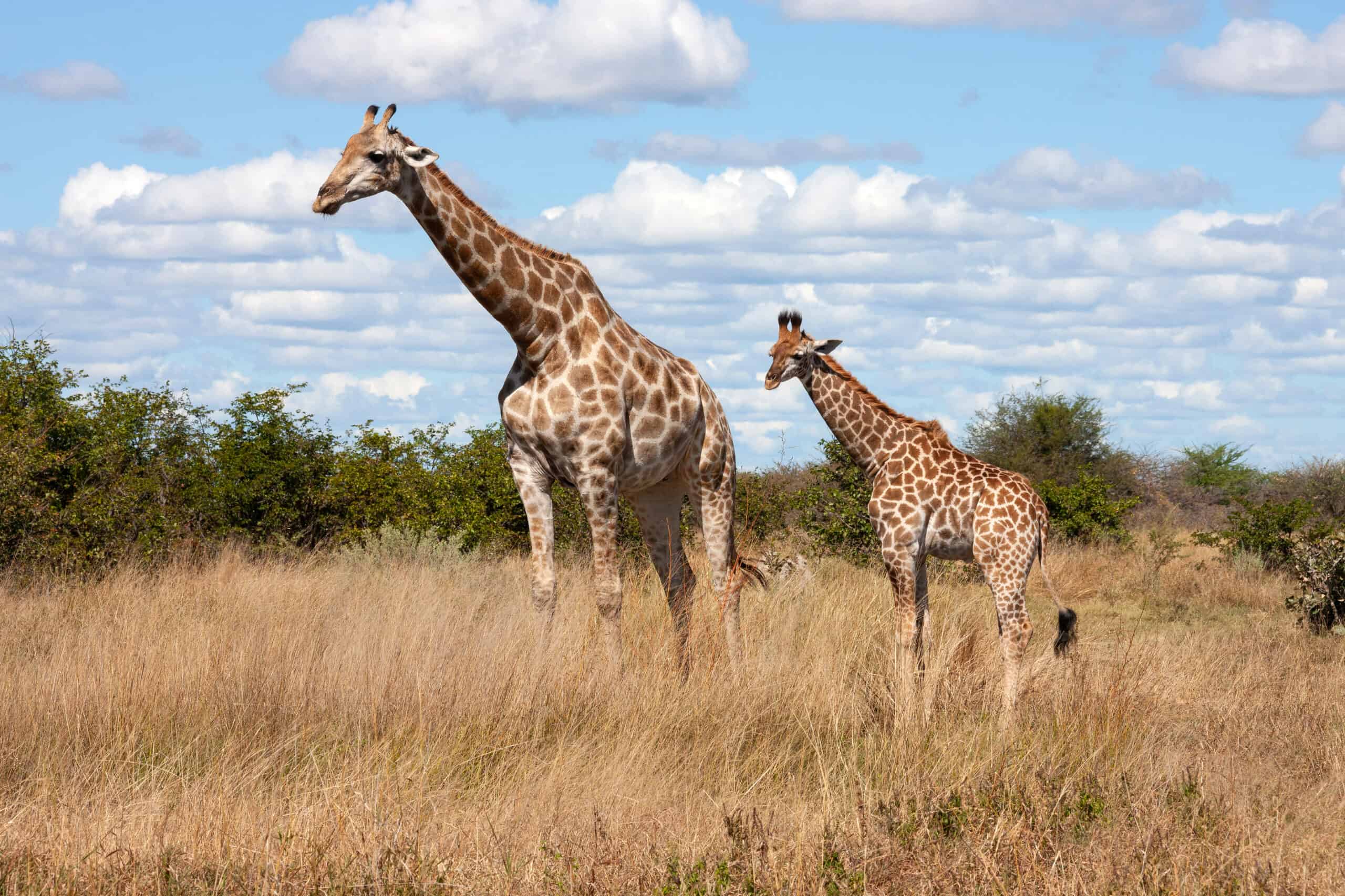
Giraffes, the tallest mammals on the planet, are iconic symbols of Africa’s diverse wildlife. Their long necks, which contain the same number of vertebrae as a human’s, allow them to reach high into trees to feed on leaves and buds. Each giraffe’s coat pattern is unique, much like a human fingerprint. These gentle herbivores are often seen gracefully moving across the savannas, their height giving them a vantage point to spot predators from afar.
Black Rhinoceros (Diceros bicornis)
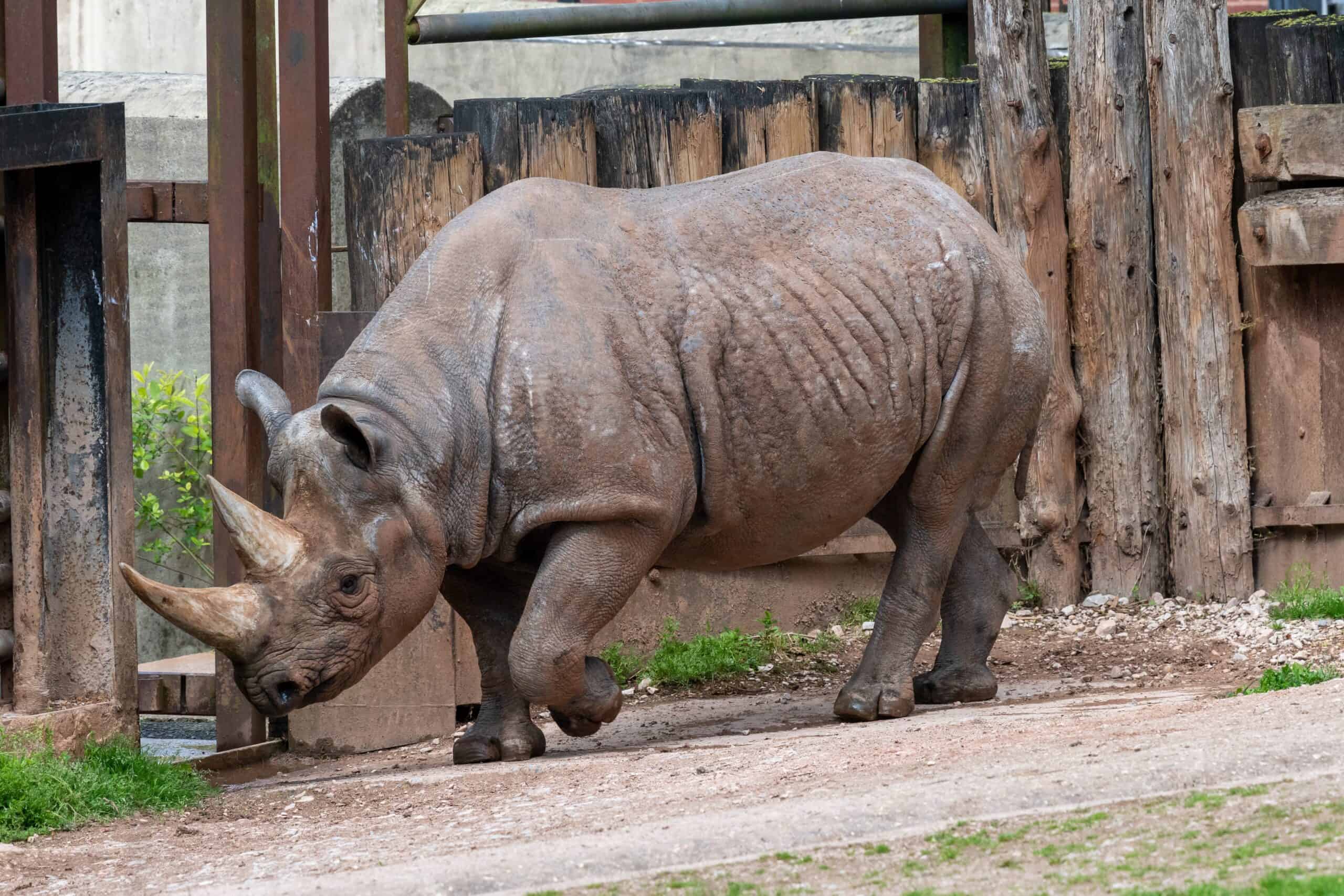
Despite their name, Black Rhinoceroses are not actually black but rather grayish-brown. These solitary creatures are known for their two horns made of keratin, which they use for defense and foraging. Black Rhinos prefer a diet of leafy plants, branches, shoots, and fruits. Sadly, they are critically endangered due to poaching for their horns, which are highly valued in illegal markets.
Hippopotamus (Hippopotamus amphibius)
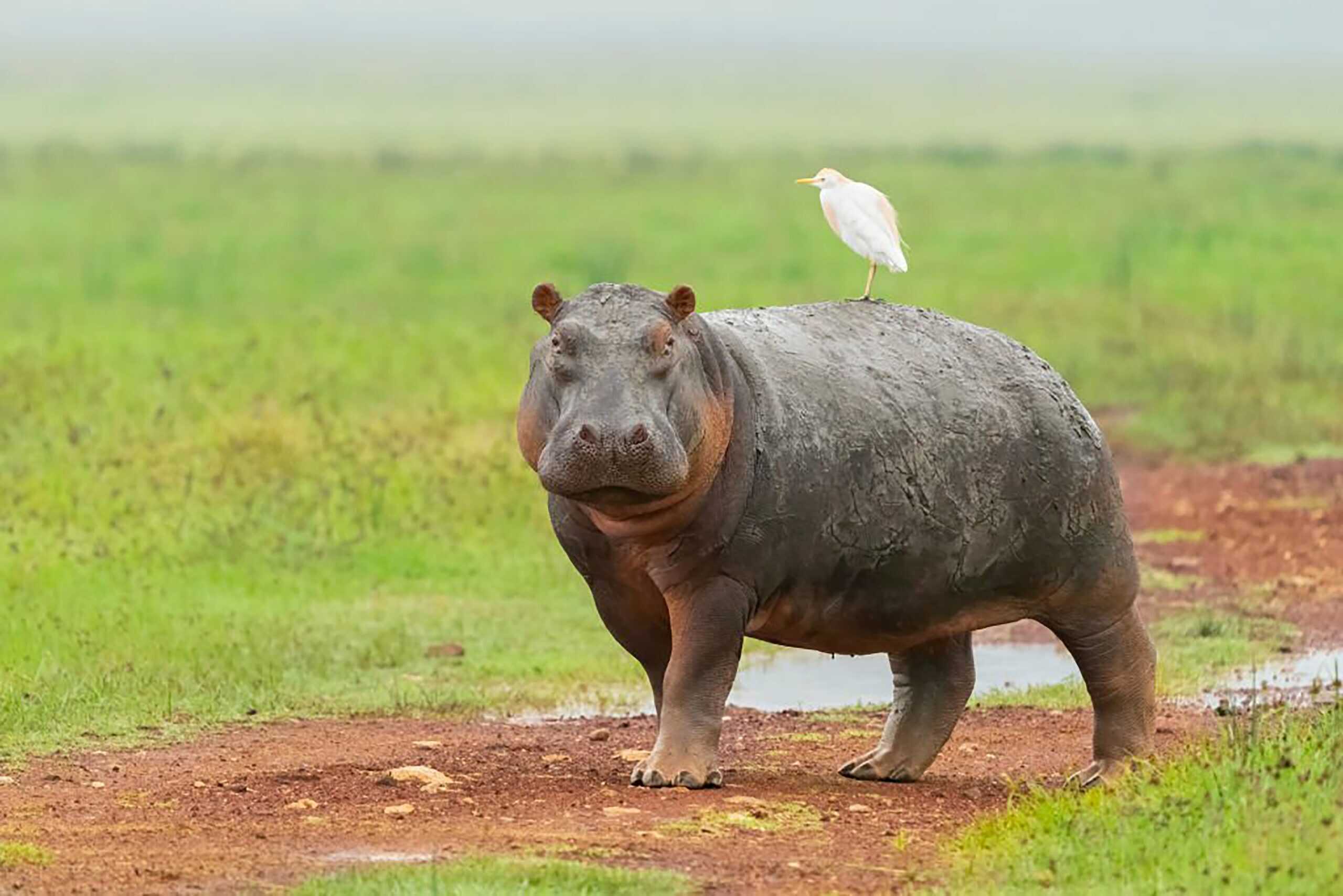
Often found lounging in rivers and lakes, the Hippopotamus is one of Africa’s most unique herbivores. Weighing up to 3,300 pounds, these semi-aquatic mammals spend much of their time submerged in water to keep cool. At night, they emerge to graze on grasses, consuming up to 80 pounds of vegetation. Despite their bulky appearance, hippos can run surprisingly fast, reaching speeds of up to 20 miles per hour on land.
Okapi (Okapia johnstoni)
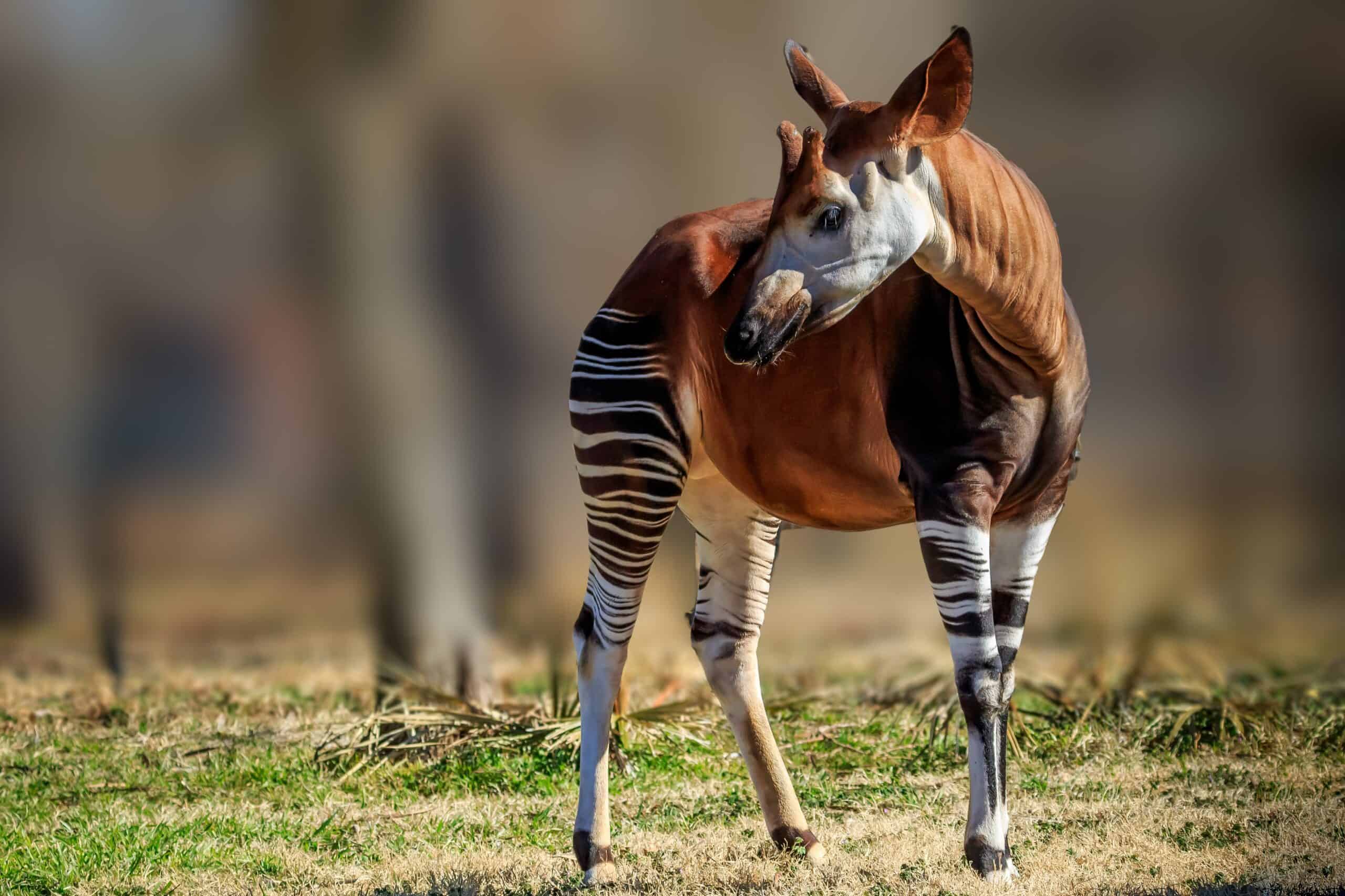
The elusive Okapi, often referred to as the “forest giraffe,” is native to the dense rainforests of the Democratic Republic of Congo. With its striking striped legs and long neck, it resembles a giraffe but is more closely related to its cousin. Okapis feed on a variety of leaves, twigs, and fruits, using their long tongues to strip foliage from branches. Their secretive nature and remote habitat make them one of Africa’s lesser-known yet fascinating herbivores.
Greater Kudu (Tragelaphus strepsiceros)
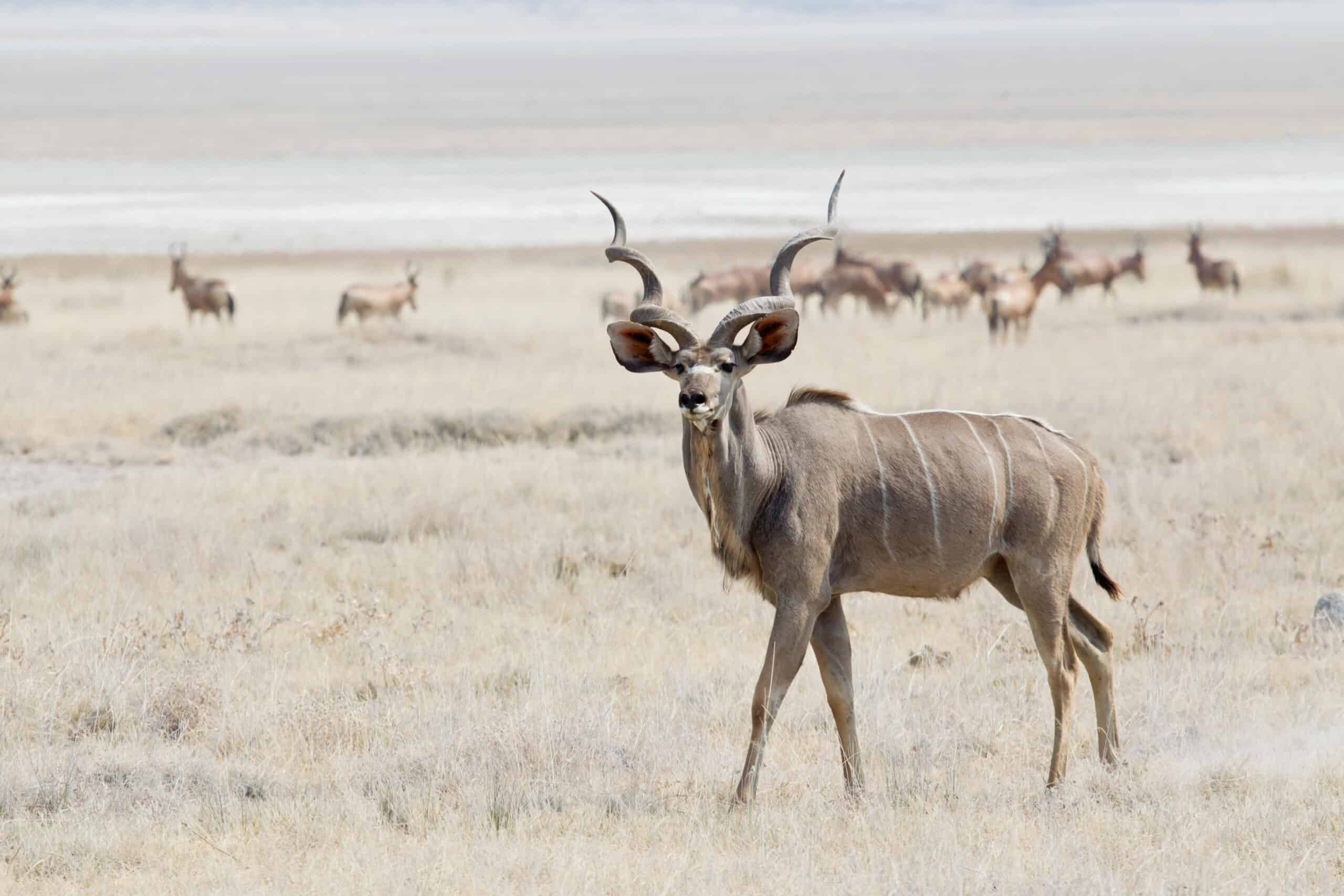
The Greater Kudu is one of Africa’s most majestic antelopes, recognized by its long, spiraled horns and striking white stripes running along its body. Inhabiting woodlands and savannas, these elegant herbivores feed on leaves, grass, and fruits. Greater Kudus are known for their agility and ability to leap over obstacles up to eight feet high, a skill that helps them evade predators.
African Buffalo (Syncerus caffer)
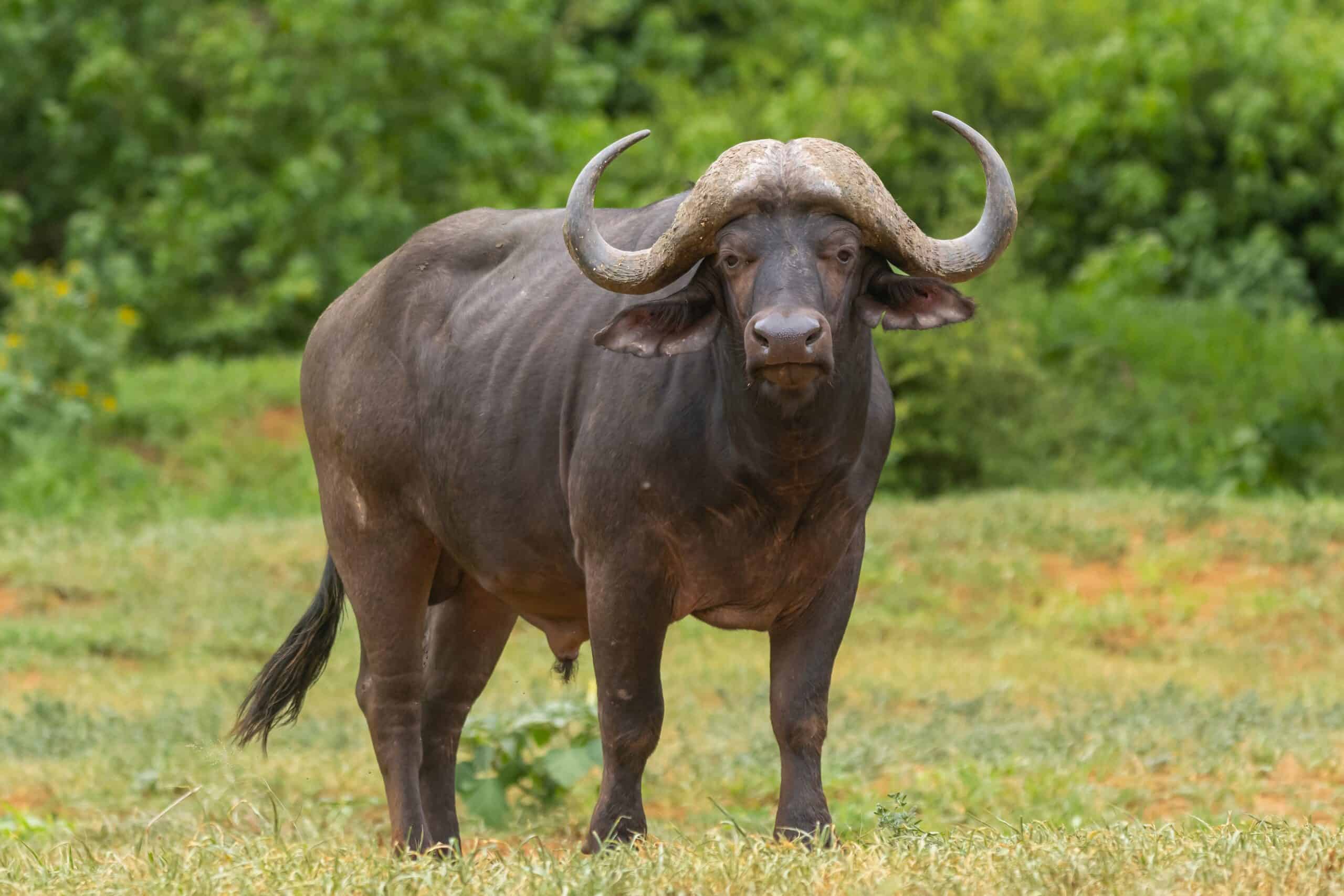
The African Buffalo, also known as the Cape Buffalo, is a formidable herbivore that roams the grasslands, savannas, and forests of Africa. These massive animals, weighing up to 1,900 pounds, live in large herds for protection against predators. African Buffalos primarily graze on grasses but will also consume shrubs and herbs. Their unpredictable nature and strength make them one of the most dangerous animals in Africa.
Zebra (Equus quagga)
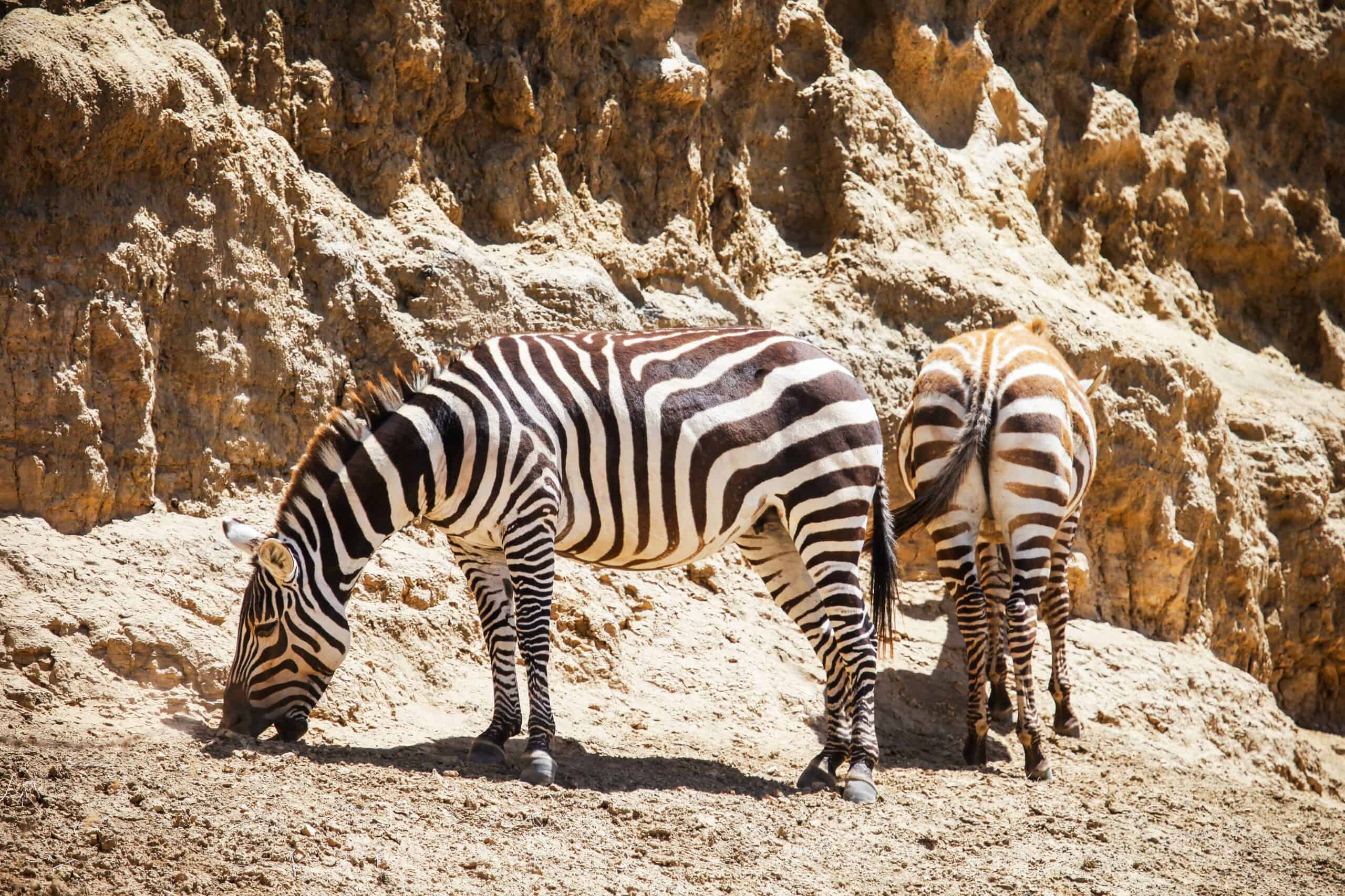
Zebras, with their distinctive black-and-white striped coats, are among Africa’s most recognizable animals. Each zebra’s stripe pattern is unique, serving as a form of identification among individuals. These social herbivores live in herds and primarily feed on grasses, although they also consume leaves and bark. Zebras are known for their strong social bonds and coordinated movements to protect against predators.
Warthog (Phacochoerus africanus)
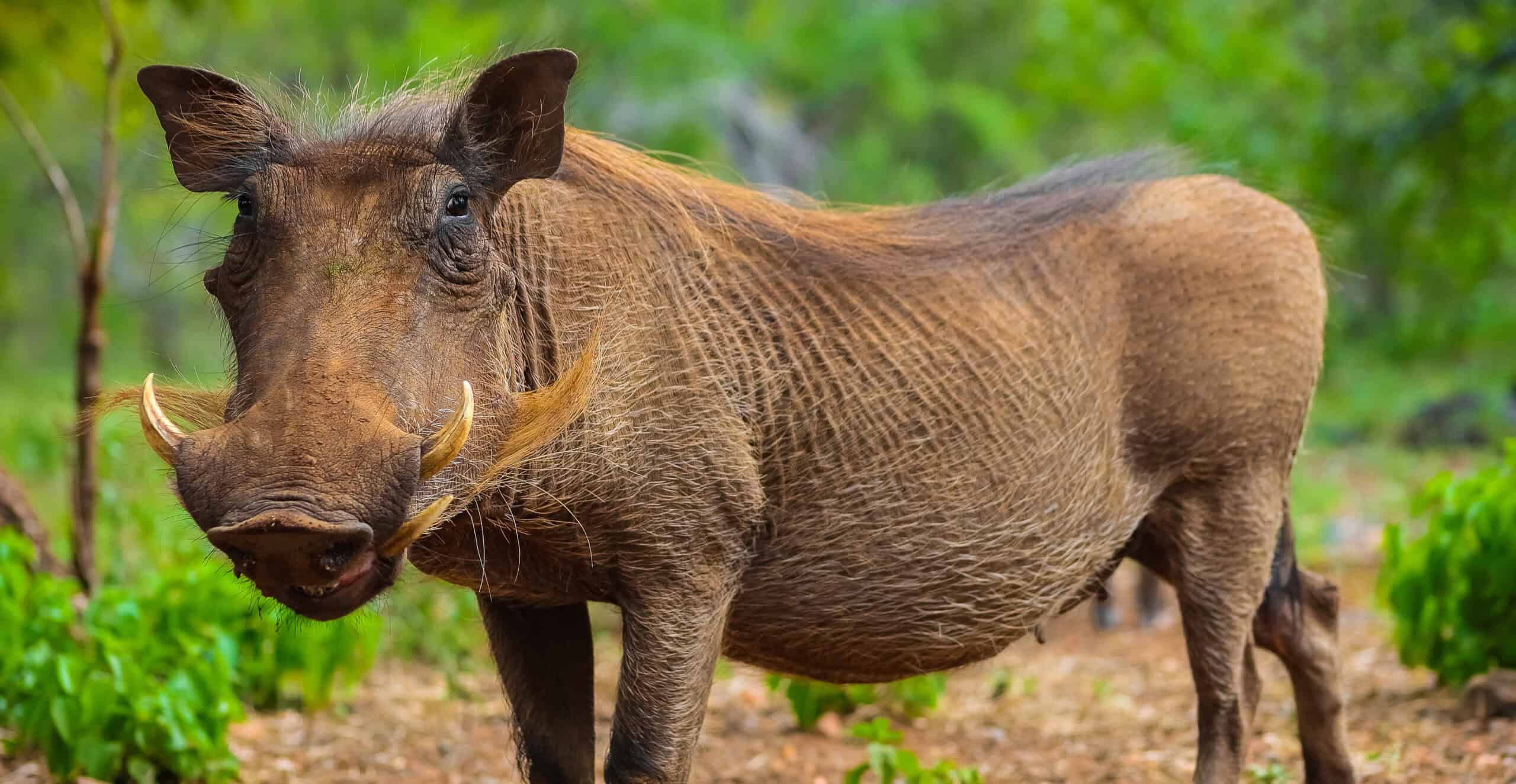
Warthogs are robust, medium-sized wild pigs with characteristic facial warts and impressive tusks. Found in savannas and grasslands, they graze on grasses, roots, berries, and bark. Despite their somewhat fierce appearance, warthogs are generally non-aggressive and use their tusks primarily for digging and foraging. They have a unique habit of kneeling on their front knees while grazing.
Sitatunga (Tragelaphus spekii)
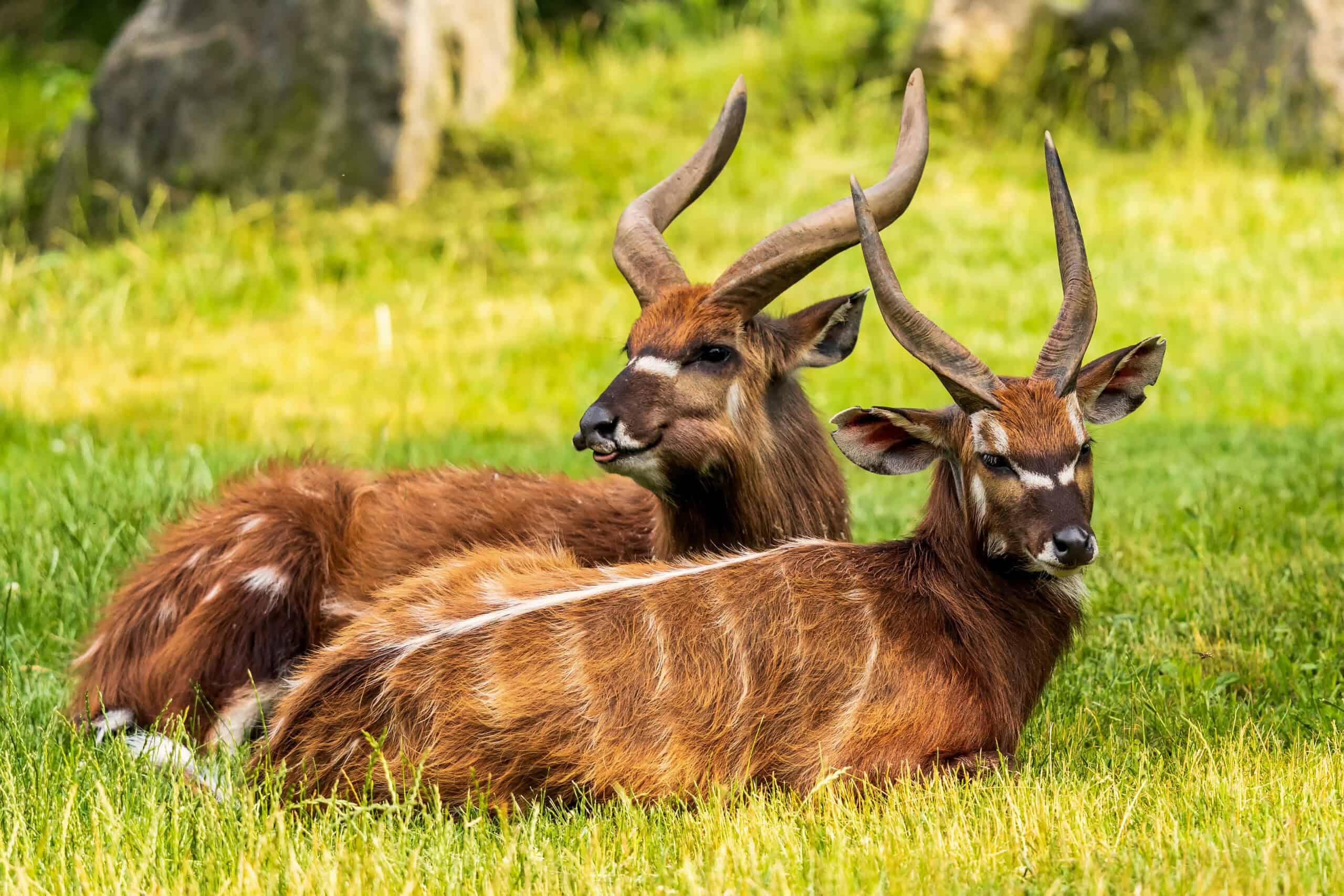
The Sitatunga is a semi-aquatic antelope adapted to life in swampy areas and wetlands. With its elongated hooves and splayed toes, it can move easily through marshes and muddy terrain. Sitatungas feed on aquatic plants, grasses, and herbs. Their shaggy, water-resistant coat helps them blend into their watery habitat, making them difficult to spot by predators.
Bontebok (Damaliscus pygargus)
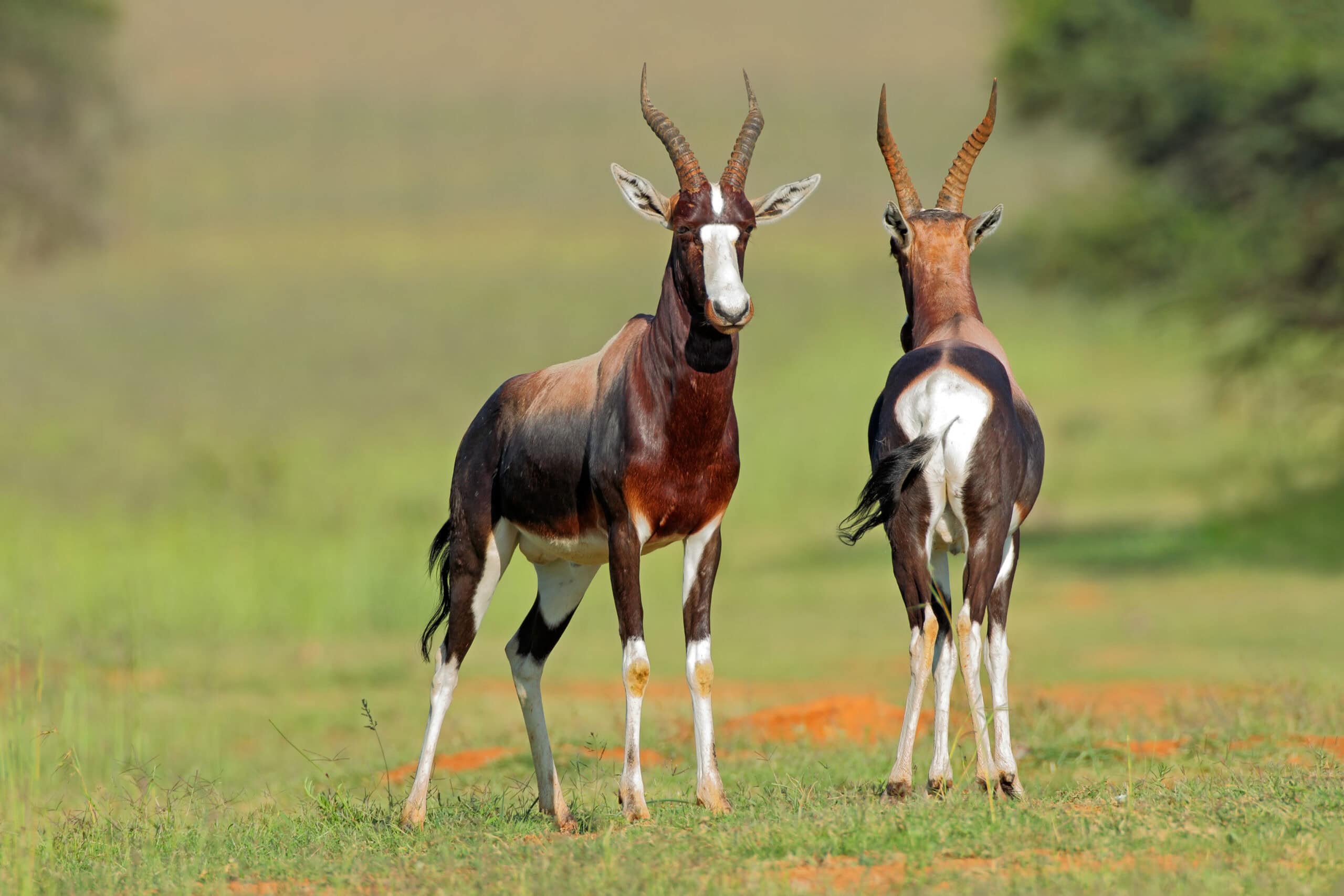
The Bontebok, a striking antelope with a dark brown coat and a distinctive white blaze on its face, was once near extinction but has recovered thanks to conservation efforts. Native to South Africa, these herbivores graze on grasses and prefer open plains and fynbos habitats. Bonteboks are known for their social behavior, often forming small herds led by a dominant male.
Bongo (Tragelaphus eurycerus)

Bongos are the largest and heaviest forest antelopes, recognized by their rich chestnut coat adorned with white stripes. These elusive creatures inhabit dense forests and feed on leaves, shoots, and bark. Bongos have large, spiraled horns that both males and females possess. Their nocturnal and secretive nature makes them a rare sight in the wild.
Eland (Taurotragus oryx)
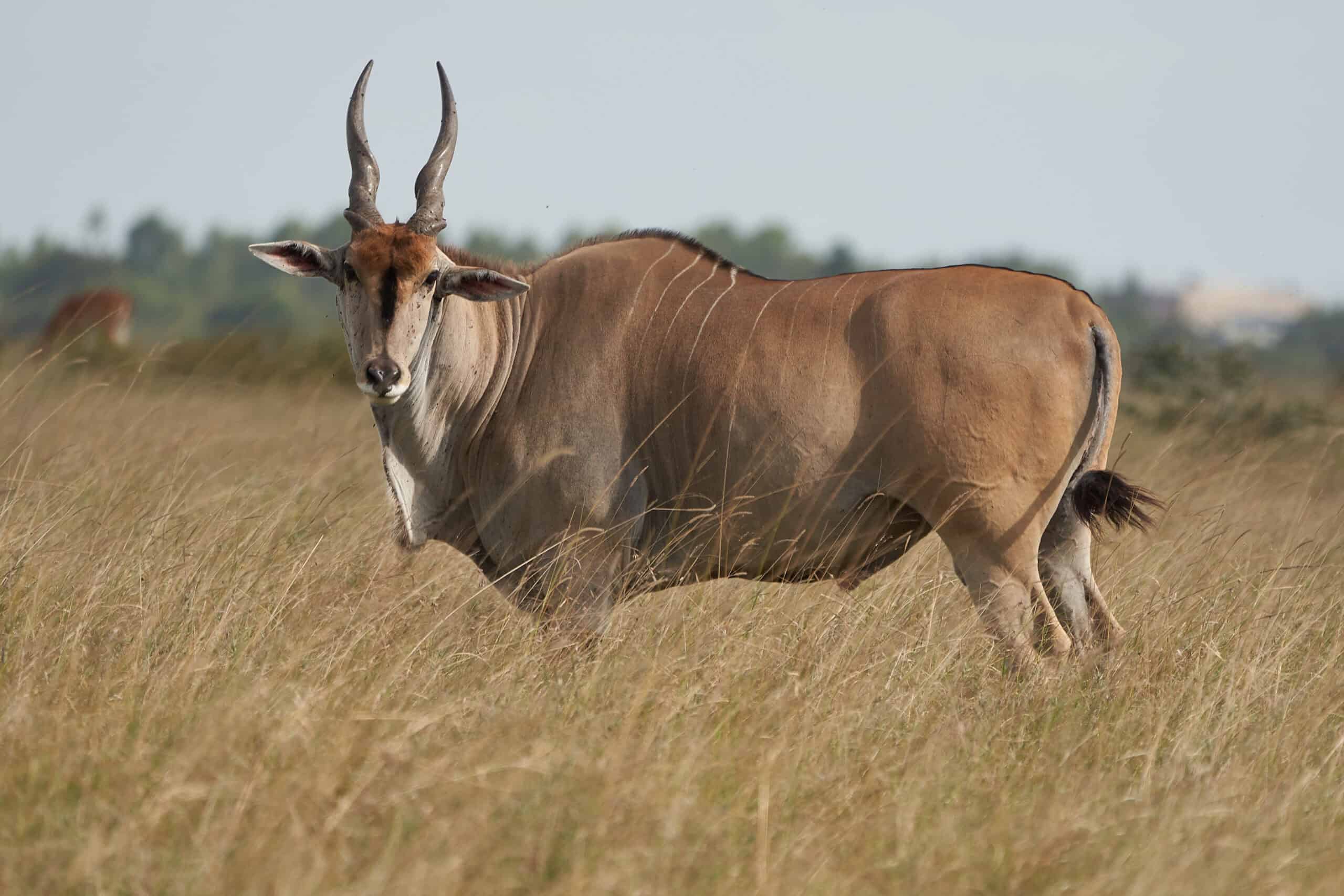
The Eland is the largest of the African antelopes, known for its ox-like build and long, twisted horns. These gentle giants inhabit savannas, grasslands, and open woodlands, feeding on grasses, leaves, and fruits. Elands are known for their remarkable endurance, capable of covering great distances in search of food and water. They are also one of the few antelopes that produce milk, which is a crucial resource for their young.
Red Hartebeest (Alcelaphus buselaphus caama)
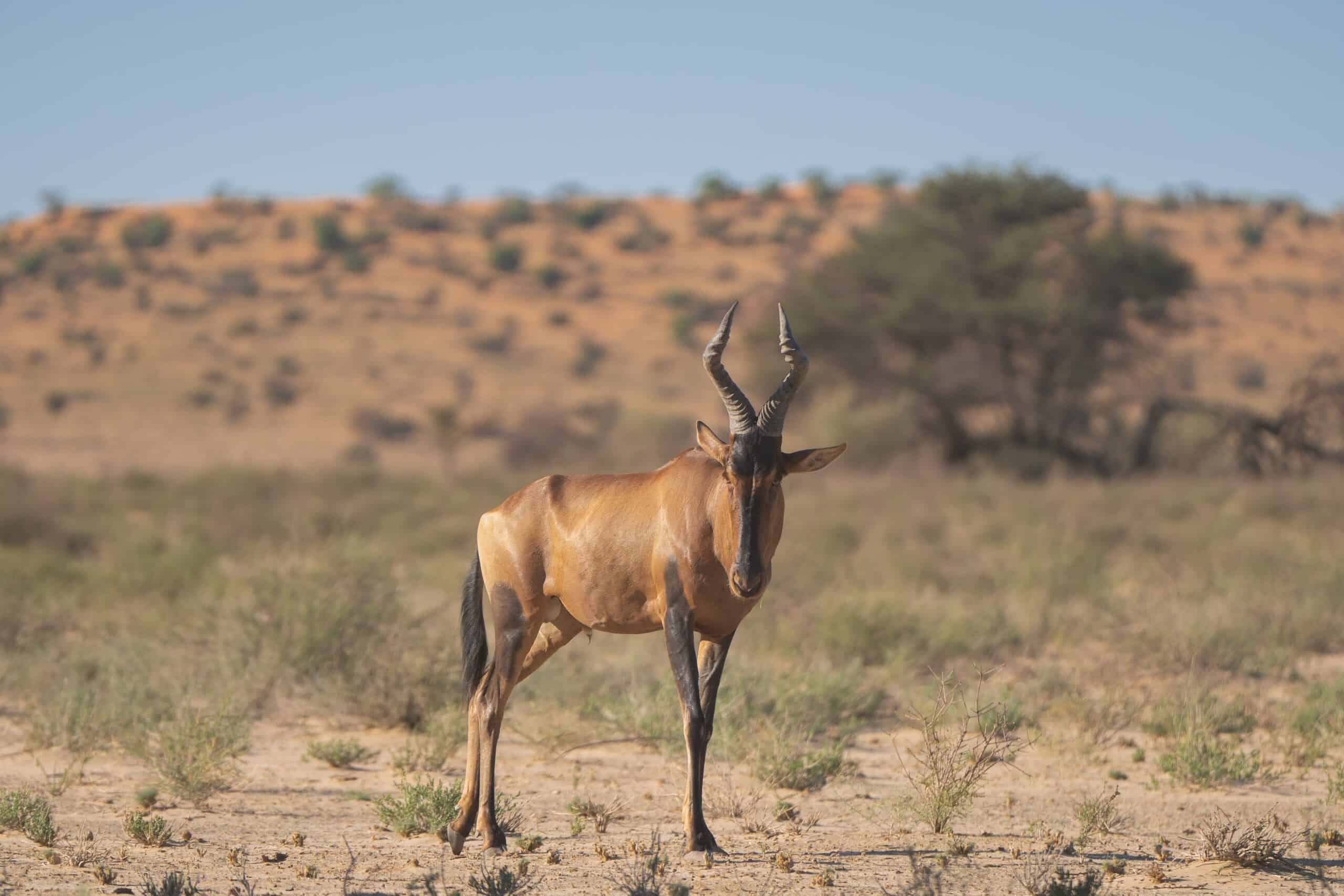
The Red Hartebeest is a striking antelope with a reddish-brown coat, black markings, and distinctive horns that curve in a unique lyre shape. Inhabiting open plains and grasslands, they primarily graze on grasses but will also consume herbs and shrubs. Red Hartebeests are highly social animals, often seen in herds that can range from a few individuals to several hundred.
Sable Antelope (Hippotragus niger)

The Sable Antelope is one of Africa’s most visually striking herbivores, with its glossy black coat and impressive, backward-curving horns. These majestic animals prefer woodlands and savanna habitats, where they feed on grasses and leaves. Sable Antelopes are known for their territorial behavior, with males fiercely defending their groups from rivals.
Springbok (Antidorcas marsupialis)
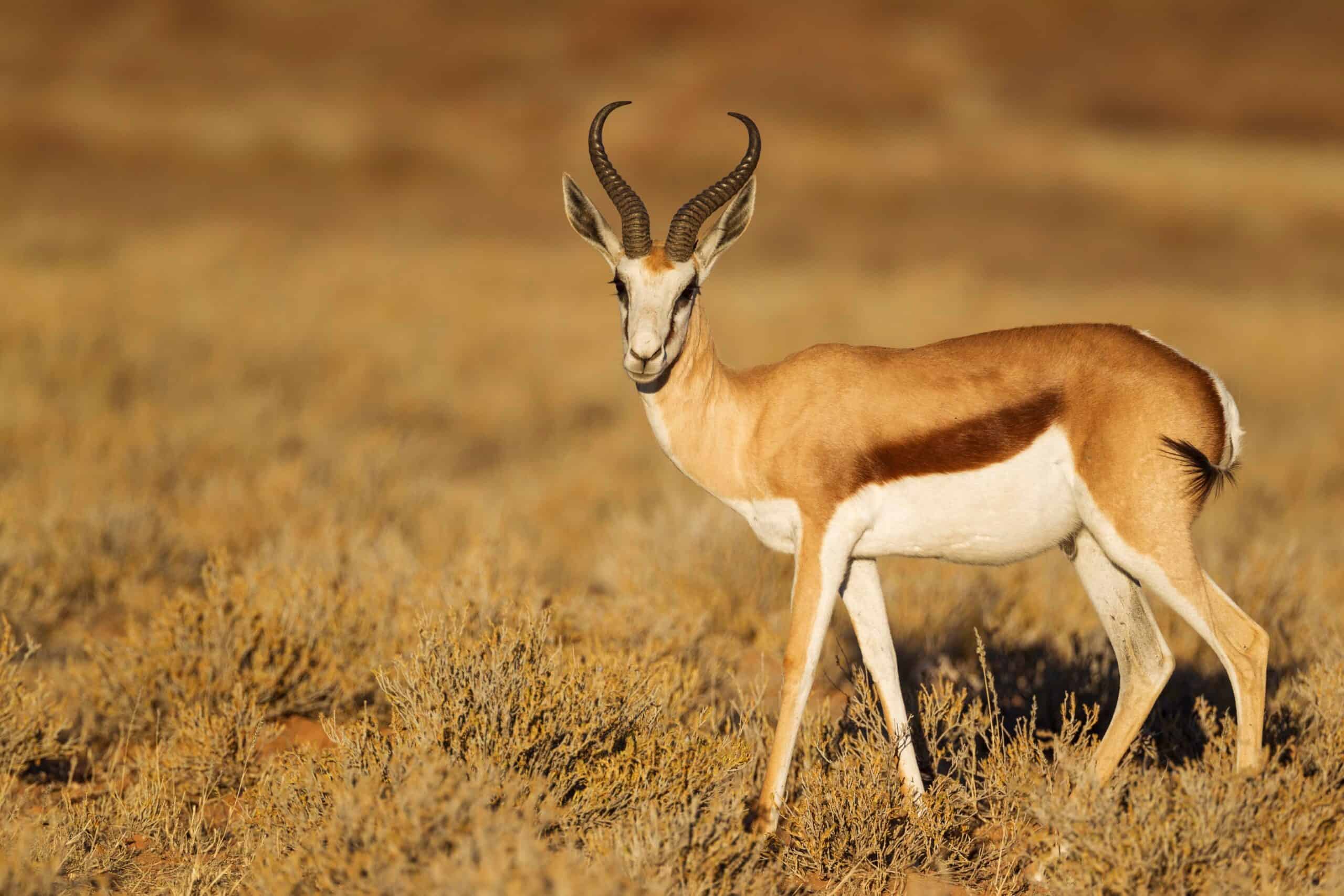
The Springbok, South Africa’s national animal, is a small, agile antelope known for its remarkable jumping ability, called pronking. These herbivores inhabit arid regions, grasslands, and savannas, feeding on grasses, leaves, and succulents. Springboks are social animals, often forming large herds, especially during the rainy season when food is abundant.
Common Duiker (Sylvicapra grimmia)
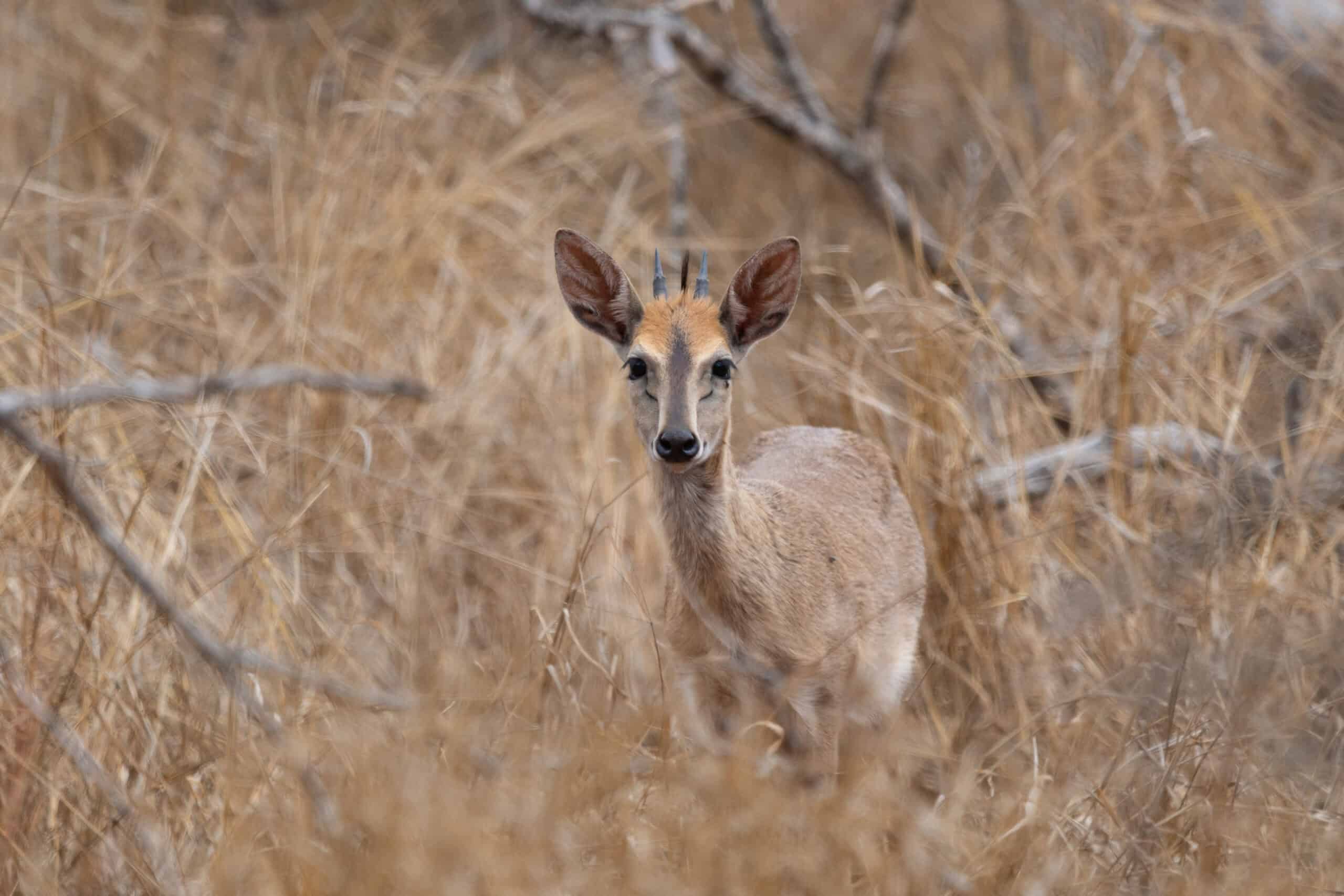
The Common Duiker is a small, shy antelope found across sub-Saharan Africa. With its grayish-brown coat and short, straight horns, it prefers dense vegetation where it can easily hide from predators. Duikers feed on a varied diet, including leaves, fruits, seeds, and even small animals. Their name, “duiker,” comes from the Afrikaans word for “diver,” reflecting their habit of diving into thickets when threatened.
Kafue Lechwe (Kobus leche kafuensis)
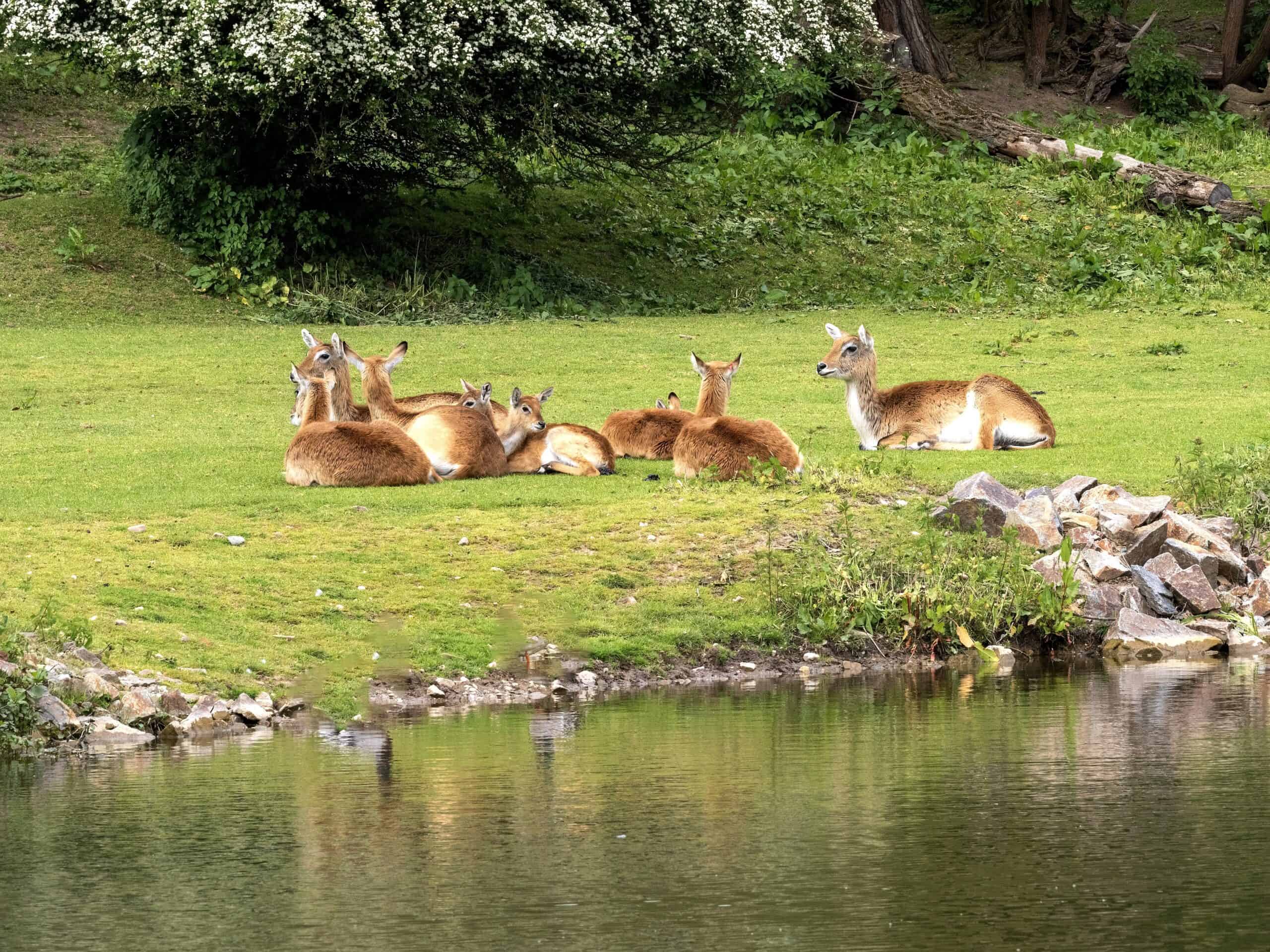
The Kafue Lechwe is a water-loving antelope found in the Kafue Flats of Zambia. With a reddish-brown coat and white underparts, these herbivores are well adapted to their wetland habitat. They graze on aquatic grasses and other vegetation, often seen wading through water. Kafue Lechwes are known for their impressive speed and agility, which they use to escape predators.
This article originally appeared on Rarest.org.
More From Rarest.Org
American muscle cars have always captivated automotive enthusiasts with their raw power, distinctive designs, and storied histories. Among these iconic vehicles, some models stand out not only for their performance but also for their rarity. Read more.
Vinyl records have long been treasured by music enthusiasts for their rich sound and tangible connection to the past. While many albums are readily available, some have become incredibly rare and highly sought after by collectors. Read more.
Traditional dances from around the world offer a glimpse into the rich cultural heritage and history of various regions. Each dance tells a story, preserving the customs, beliefs, and artistic expressions of its people. Read more.

